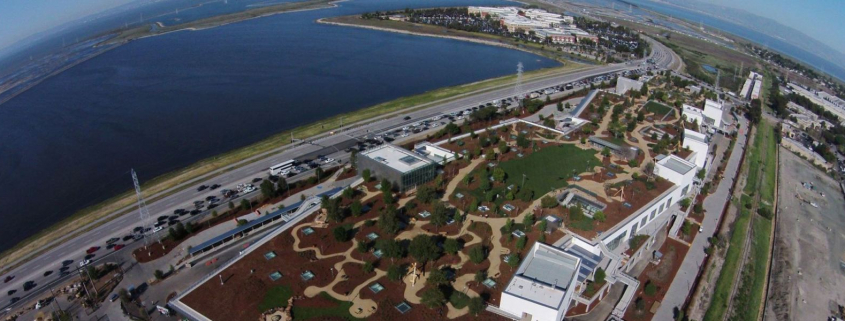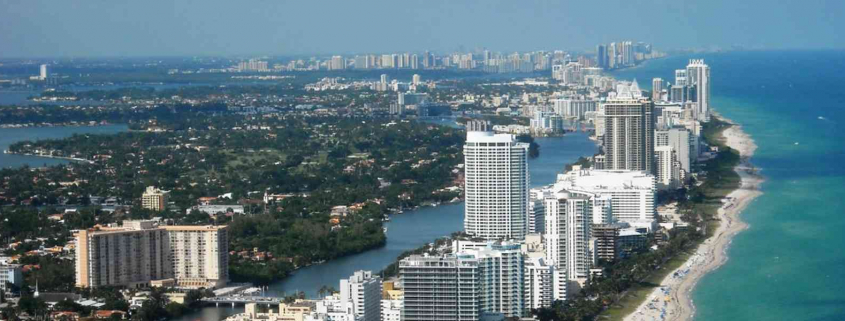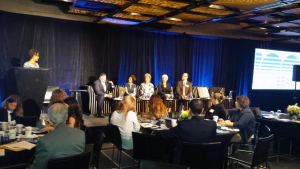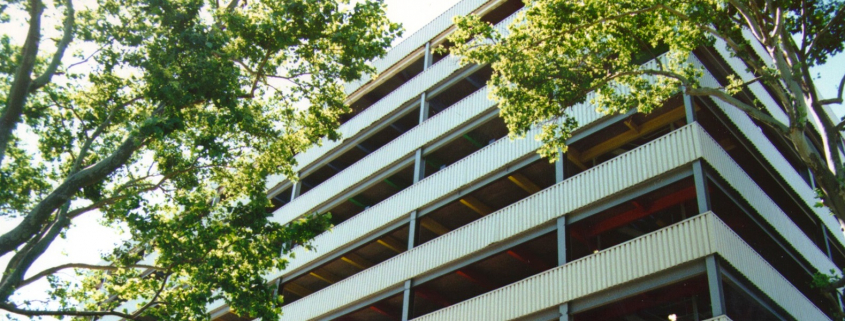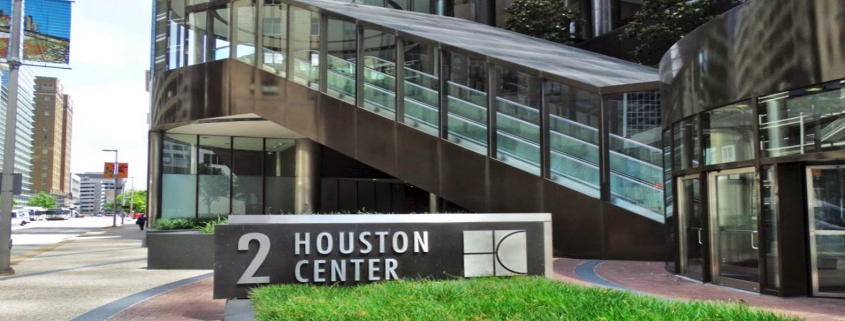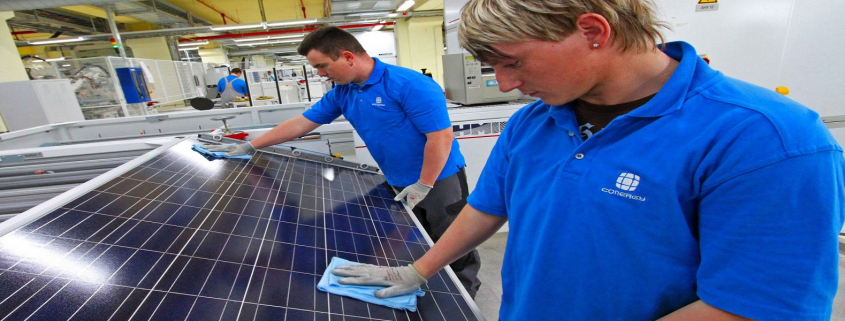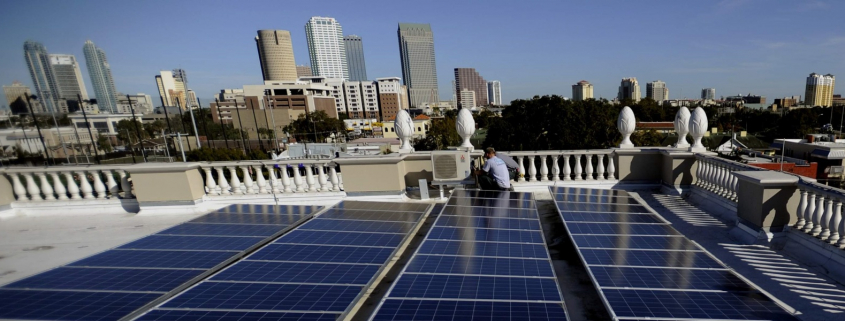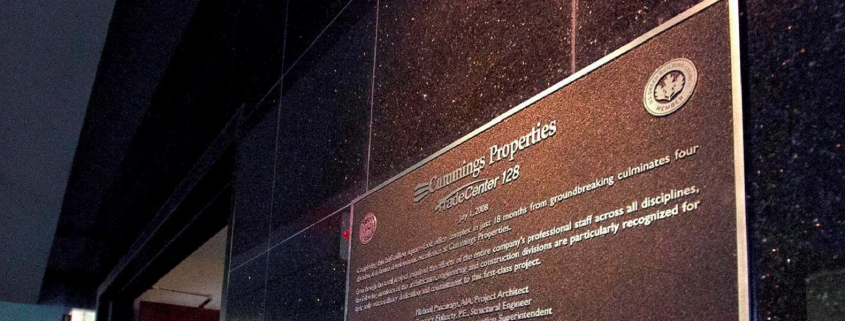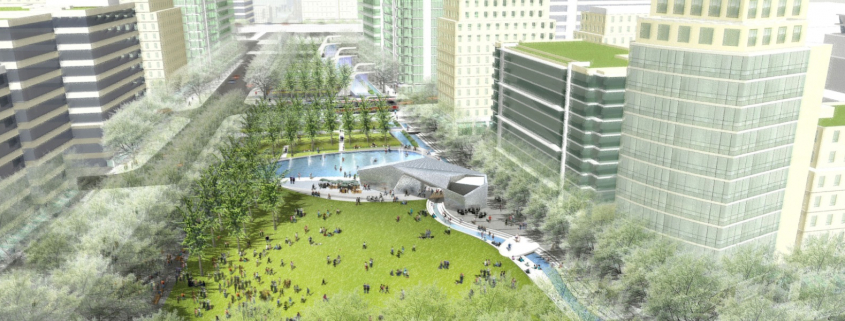When Scott Hardin found a home four years ago for his real estate appraisal firm, The Appraiser Guy, at Woburn’s Trade Center 128, he was pleased to settle into the “green” building.
Besides the convenient location on Route 128, the building was equipped with solar panels, low-flow toilets, and even bathroom towel dispensers that use smaller sheets of paper. The building’s advertised LEED credentials played a big part in Hardin’s decision to rent there. The LEED award – Leadership in Energy and Environmental Design – is the building industry standard for environmental and energy efficiency used worldwide and issued by the non-profit U.S. Green Building Council.
A bronze wall plaque in the lobby of the half-million-square-foot Trade Center, owned by Cummings Properties, features a USGBC logo. Posters displayed in hallways highlight the building’s green features with a logo touting “LEED Gold pre-certified,” using the USGBC name. But the office complex is not, in fact, certified for any LEED award by the non-profit group.
“It’s not?” asked Hardin, when told by a reporter who had checked the USGBC registry. “I just thought the building was.”
While Cummings uses the LEED branding in promotional material and registered the building to become certified for the award, the company decided not to continue what it considered an onerous process merely to obtain “a piece of paper,” said Dennis Clarke, the company’s president. Company officials maintain that the building was built as “green” as if it were certified by the USGBC.
LEED administrators are concerned about “a small group of developers or project owners who may take advantage of the LEED name” by using their simple registration of intention to build green as an actual LEED award, said Marisa Long, the USGBC spokeswoman. They may use it in their advertising, while never following through to get certified.
 In the world of building green, there may be no bigger influence than the US Green Building Council and its LEED certification, which can assure higher rents and sale prices for commercial buildings. But the New England Center for Investigative Reporting has found that limited USGBC oversight allows developers to misappropriate the LEED brand. Some use misleading advertising that can deceive renters or buyers by exaggerating a project’s LEED certification status – or by obscuring the lack of one.
In the world of building green, there may be no bigger influence than the US Green Building Council and its LEED certification, which can assure higher rents and sale prices for commercial buildings. But the New England Center for Investigative Reporting has found that limited USGBC oversight allows developers to misappropriate the LEED brand. Some use misleading advertising that can deceive renters or buyers by exaggerating a project’s LEED certification status – or by obscuring the lack of one.
“There’s a lot of gamesmanship and strategy promoting buildings as LEED-certified,” said Norm Miller, a professor of real estate at the University of San Diego. Miller helped produce a 2011 study in 14 American cities that found that buildings advertising LEED certification bring an average of 7 percent higher rents than ones without the designation. In Boston, where large-scale projects are legally required to meet LEED standards, the researchers found LEED-certified buildings command nearly double the rent of those without it.
A LEED award only goes to projects that have completed a rigorous certification process, said Long: “The only way to measure a building’s sustainability – energy efficiency, environmental features – is through certification. There’s no other way to do it. If a project is not certified to LEED standards, it’s not verified by USGBC that it’s a green building.” But, Long added, the policing of the standards – and public misunderstanding of them – is not something the council can fully control. “It’s like any trademark or any copyright – we can’t control everyone who is using our name. We can only address it when it’s brought to our attention.”
In an informal review of Boston-area developers, NECIR found eight projects – including Trade Center 128, the current home of Middlesex Superior Court – that have used the LEED brand to advertise their green features without LEED certification.
Some building owners inflate the fact that they are “LEED registered,” and some say they are “pre-certified” – but that simply means a builder has submitted green construction plans for preliminary review. Neither is an award, said USGBC officials, and one even called these designations “pretty minor.” “A lot of buildings have filed papers to become a LEED project, but that doesn’t mean they’ve completed the LEED certification process,” said John Scofield, an Oberlin College professor who has studied the energy efficiency of LEED-certified buildings and is a critic of the USGBC system. “It’s a huge difference.”
For example, in Northampton, PeoplesBank advertised the green attributes of a LEED “registered” branch for at least a year; but it did receive certification for the LEED gold award Jan. 26.
The Nantucket Dreamland theater’s website touted conflicting claims about its renovation – one that it had earned a LEED silver certification, the other that it was in the process of becoming LEED certified. When NECIR reached them by phone Feb. 3, the executive director Melissa Murphy said the certification claim was an error and she removed it.
In Braintree, the Campanelli construction company advertises three Massachusetts projects with the LEED branding, even though none is certified by the Green Building Council. “Even if you don’t have the formality of [LEED], the building is still sustainable,” said Danielle Simbliaris, the Campanelli marketing manager.
Campanelli advertises the 400 Uplands Woods Corporate Center in Norwood as LEED “registered” – but it was never built and has been replaced by an apartment building that broke ground in November. The company stretches LEED branding in wording that says its 2 Pond Park Medical office in Hingham “could have” achieved a LEED award. And it also highlights the LEED “pre-certification” of the Presidential Woods Corporate Center project in Woburn, says Simbliaris, which will not likely be built.
“There is nothing that is said here that is incorrect,” said Simbliaris. “It’s the truth, whether [the customers] understand that or not.” And that’s what LEED administrators are concerned about – as in the case of The Appraiser Guy, Hardin, who did not understand his building’s LEED status. “[W]e don’t want to dilute the LEED brand by having projects that haven’t gone through that rigorous third-party verification to be promoting it as a LEED building,” said Long.
LEEDing The Way To Green
LEED is in demand. A 2014 Turner Construction study of 300 executives found that 62 percent said it was “extremely or very likely” they’d seek LEED certification for constructing green projects, up from 48 percent in 2012.
McGraw Hill Construction reported that between 2005 and 2011 (the latest data available) the green building business grew from $10 billion worldwide to about $78 billion. And according to the latest tax records available, USGBC earned revenues of more than $74 million in 2013 – up nearly 40 percent – from $53.6 million in 2012. LEED certifications are issued by the Green Building Certification Institute, a sister organization of the USGBC, which also issues professional accreditation to about 190,000 members who do reviews of LEED award applicants.
“People who are in the US Green Building Council and people who get LEED certifications are looking for a financial edge. This is a very big money operation,” said John Scofield, an Oberlin College professor who has studied the energy efficiency of LEED-certified buildings and is a critic of the USGBC system.
Across the U.S., more than 140 federally owned or leased office spaces are LEED-certified, according to the Government Services Administration. Since 2007, Massachusetts has required LEED certification for state-owned building projects larger than 20,000 square feet. And Boston and Cambridge require some developers to ensure their projects meet LEED standards; while a handful of towns in the state encourage building to LEED standards.
In Massachusetts, there are more than 680 certified commercial properties, including hospitals and schools, according to the USGBC. (Among them is WGBH headquarters in Brighton, which hosts some offices of the New England Center for Investigative Reporting.)
Other local LEED-certified projects include UMass Memorial Medical Center’s Lincoln Street ophthalmology facility in Worcester, as well as the U.S. federal courthouse and the White Street fire station in Springfield. Worcester State University’s administration building, Worcester Polytechnic Institute’s recreation center, and Clark University’s Blackstone Hall all have LEED certifications. Local retailers also operate LEED-certified spaces, including a Stop & Shop in Springfield and a Shaw’s in Worcester.
LEED certification is a point-based system – scores increase with each feature, such as making use of sustainable materials, implementing energy and water efficiency, and taking advantage of mass transit. “What a sophisticated consumer or potential tenant needs to ask, [is], ‘What kind of certification, and what level?’” said Miller, the University of San Diego professor.
Deciding what makes a building “green” is judged by a growing number of private and governmental groups. But few have the influence of the non-profit USGBC LEED program, which has certified more than 25,000 new construction and retrofit commercial projects and government offices globally with its LEED award. “Getting LEED certification is a very long, drawn-out process that requires a lot of time and documentation with the USGBC,” said Scott Weiss, managing director of commercial development at the Burlington-based Gutierrez Company. His company’s office building at 5 Wall Street in Burlington was LEED certified in 2009.
Meaningless Logos
In the case of the Woburn Trade Center, with about 150 tenants, Clarke, the Cummings Properties president, downplayed the significance of the LEED award. After his company obtained pre-certification for the Trade Center, he said, it decided that obtaining a LEED award wasn’t worth the time.
But Trade Center advertising suggests there is value in LEED branding – it liberally uses USGBC logos on its lobby plaque and on posters around the building. Management removed custom-made USGBC logos from its website after NECIR asked questions about them. Told of the logos used by the Trade Center – which is, indeed, pre-certified by the Council – the USGBC’s Long, said an official logo for pre-certification “doesn’t exist.”
In Newton, Elaine Construction Company’s president, Lisa Wexler, removed a USGBC membership logo from her company’s website after being asked about it by an NECIR reporter last summer. The membership, which offers reduced rates on building reviews, had expired in December 2008. Wexler said its continued use was an oversight.
The Elaine website highlights the firm’s LEED experience, including eight projects it says are LEED-certified. Six are listed as certified in the USGBC database. One, Boston Coach, in Everett, is not in the council public database at all. And Elaine’s renovation of the Presentation School Foundation in Boston – touted on its website as “LEED gold,” with “pending” added after NECIR queries on Feb. 3 – is not certified, according to the database and a former board member of the school who maintains the building at Oak Square, Michael Green. But Green expects certification by March, and said the foundation needed three years to raise the $12,000 to $15,000 to pay for the certification process. USGBC would not confirm that certification is pending.
Elaine also advertises six projects that it claims haven’t sought LEED but meet its standards. The company advertises that its own office space has “the rigorous standards of LEED Gold certification,” without claiming actual certification.
It Pays To Check Your ‘Green’ Status
The USGBC’s public database is not always an accurate picture of LEED certification in Massachusetts. Abandoned projects, such as IKEA’s aborted Somerville store proposal, remain listed as “in progress” for certification. And some LEED-certified projects aren’t listed, such as Staples’ Roslindale store, which received a LEED certification in 2009.
The USGBC typically relies on project managers to provide updated data on any project registered in the LEED system, said Long. Another USGBC official said that the council has three employees and some “informal data stewards” who follow up on reports of misuse of the LEED brand. Long, who could not confirm that, did say that the organization can only investigate misuse when informed of it and would have “no reason” to track all registered projects until they’re ready to begin the certification process.
In the case of the Gutierrez Company’s office building at 5 Wall St. in Burlington, the USGBC repeatedly told a NECIR reporter that the project was never certified, even though the USBGC’s own press release said it was certified in 2009. Upon further NECIR questions, USGBC discovered that Gutierrez did achieve a LEED gold certification, but the company had not clicked an online form that would trigger notice of certification.
Gutierrez’s Weiss said he was not aware of the error until a reporter raised the issue. “We’re not typically looking up our own buildings online to see if they’re there or not,” Weiss said. “Perhaps in the future we should do that.”
Source: WGBH News


